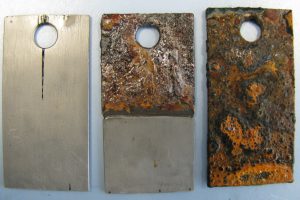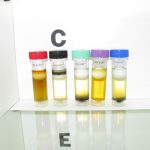
The CLP-directive for classification, labeling and packaging of substances and mixtures describes corrosion tests that need to be performed to determine if a substance or mixture is corrosive to metals (see also ADR: European agreement concerning the international carriage of dangerous goods by road, UN Recommendations on the transport of dangerous goods section 37.4: Classification procedures, test methods and criteria relating to substances of class 8).
In concrete terms, it is about exposure tests in which coupons of carbon steel and aluminium are exposed to the specific medium (fully immersed, partially immersed and fully exposed to the vapour phase). Afterwards the uniform corrosion rate is determined based on weight loss measurements and a corrosion type is determined based on visual evaluation. If relevant the maximum localized corrosion attack is measured as well.







